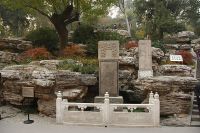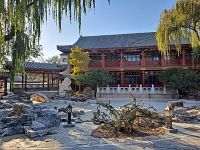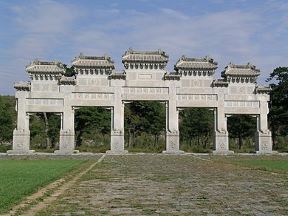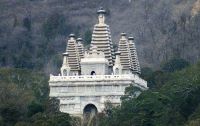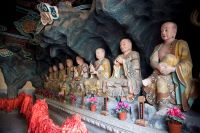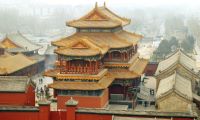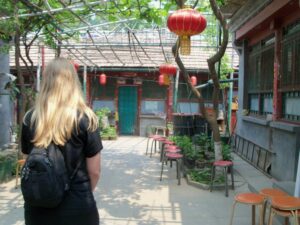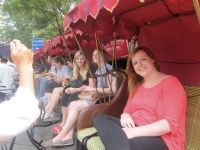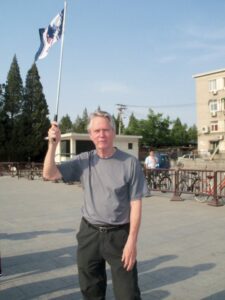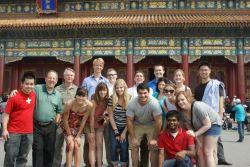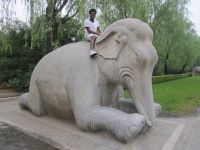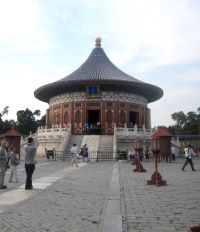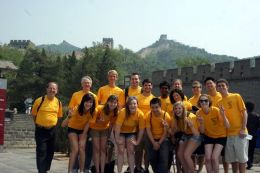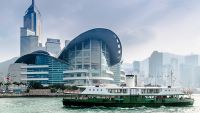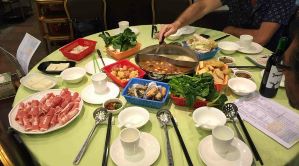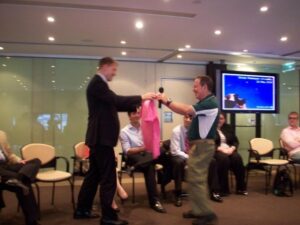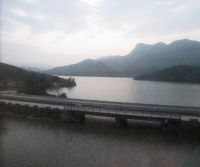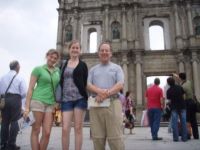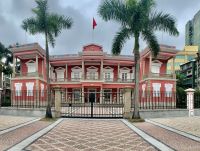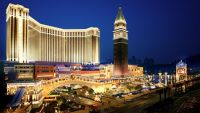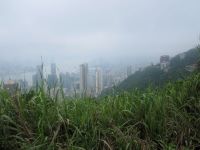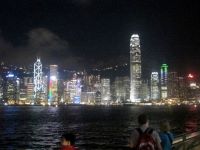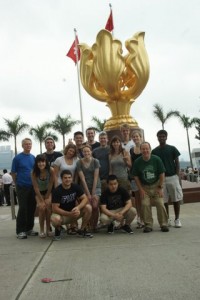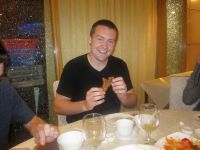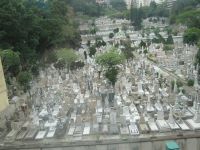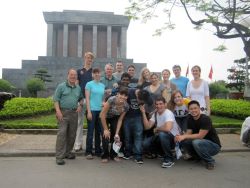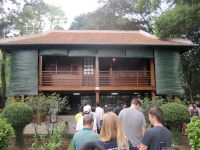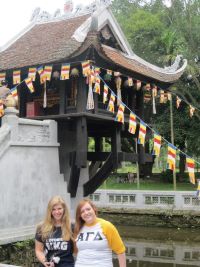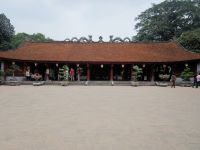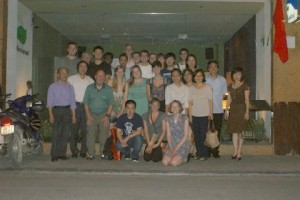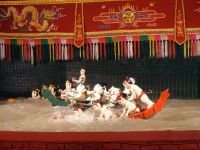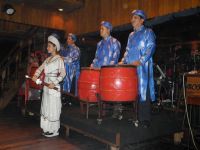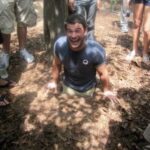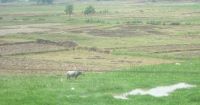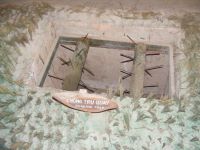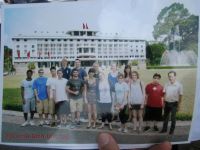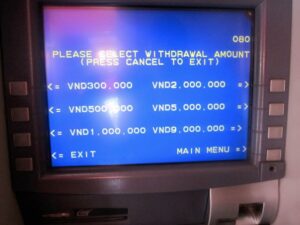The first emperor, Qin Shi huang, came to the city I visited north of Beijing over two centuries ago in search of an elixir that would guarantee him immortality. Needless to say, the fountain of youth eluded him (as it did Ponce de Leon and others), but the grateful (or frightened—emperors could be quite capricious) citizens renamed the city in his honor, which is how Qinhuangdao (Emperor Qin’s Island) got its name—and two thousand years later, it’s still the only city named for him.
My goal was much more modest; I wanted to see somewhere I’d not been that might be interesting. That’s what I was doing there, in a city of about 3 million containing the best harbor in North China.
Qinhuangdao is the hub for two nearby cities, Shanhaiguan and Beidahe, that it turned out were more interesting to me.
Shanhaiguan was located in what the Romans would have called the “limne.” Thus, it became a garrison town early, based on being where land 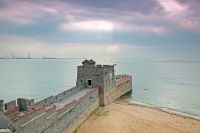 and water meet—and where the Great Wall comes down to the sea. Beginning in the late 14th century, “old dragon head,” the encampment at the pass, assumed importance in barring the Manchurians and Mongolians from invading China; in 1644, however, an officer opened the gates for the Manchu invaders, who proceeded to Beijing and swept the Ming Dynasty into history. In 1900, as part of the suppression of the Boxers, the 8 Allied armies ransacked old dragon head; it was not rebuilt until the 1980s, and has become a tourist attraction (5 stars, no less). It had a maze within the walls for training troops! Qianlong visited here (he was emperor for over 60 years) and inscribed a thought on a rock (he did that everywhere), which was defaced by the Allied armies and restored along with the fort. His statue is there, and for a fee you can have your picture taken with him.
and water meet—and where the Great Wall comes down to the sea. Beginning in the late 14th century, “old dragon head,” the encampment at the pass, assumed importance in barring the Manchurians and Mongolians from invading China; in 1644, however, an officer opened the gates for the Manchu invaders, who proceeded to Beijing and swept the Ming Dynasty into history. In 1900, as part of the suppression of the Boxers, the 8 Allied armies ransacked old dragon head; it was not rebuilt until the 1980s, and has become a tourist attraction (5 stars, no less). It had a maze within the walls for training troops! Qianlong visited here (he was emperor for over 60 years) and inscribed a thought on a rock (he did that everywhere), which was defaced by the Allied armies and restored along with the fort. His statue is there, and for a fee you can have your picture taken with him.
Shanhaiguan is also a walled city, and we visited part of the encircling wall 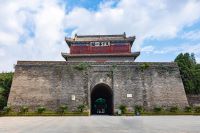 (and part of the Great Wall), the “first pass under heaven.” Within the rebuilt wall, the city has traditional buildings—one story, with eaves, a museum—the home of the wealthy Wang family, providing a stark contrast to the grim cinder-block high rises outside the city walls.
(and part of the Great Wall), the “first pass under heaven.” Within the rebuilt wall, the city has traditional buildings—one story, with eaves, a museum—the home of the wealthy Wang family, providing a stark contrast to the grim cinder-block high rises outside the city walls.
We then drove to Beidahe, a salubrious seaside resort for the rich to escape Beijing, both then and now. At one time, the area was the summer home of 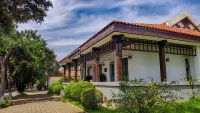
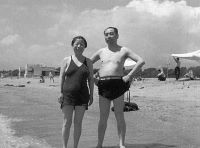 the foreign diplomats (there were barracks for the troops, and the German and Japanese maintained foreign post offices); then it was the summer home of the party elites—Mao and Lin Biao, his successor, had villas there.
the foreign diplomats (there were barracks for the troops, and the German and Japanese maintained foreign post offices); then it was the summer home of the party elites—Mao and Lin Biao, his successor, had villas there.
Today, ironically, the area welcomes a lot of foreign visitors—from Russia! 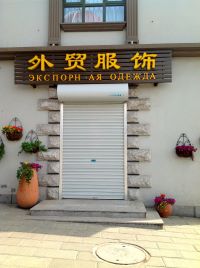 The three languages for most signs? Chinese, English, and Russian. My guide said during July/August she doesn’t know whether it’s a Chinese city or a Russian city.
The three languages for most signs? Chinese, English, and Russian. My guide said during July/August she doesn’t know whether it’s a Chinese city or a Russian city.
Well, that was yesterday. Today I’m writing from Dalian, a city of 7 million that is important in the histories of Russia, Japan, and China. On a peninsula extending into the Yellow Sea, it had the warm water harbor that Russia craved in the Orient. So much so that the Russians bullied the Japanese (who had defeated the Chinese in 1894-1895) into surrendering the spoils of war (the Liaotung Peninsula)—to them. Dalian officially celebrates its birthday from 1899, when it became a Russian city called Port Arthur. Five years later, the Japanese fleet appeared before the harbor, sank the Russian navy, then declared war. The war here was brutal, with about 60,000 dead Japanese and 20,000 Russians, but the Russians lost another fleet (the one from the Baltic sailed halfway around the world to get defeated at Tsushima Straits). In a peace brokered by Theodore Roosevelt (who won a Nobel Prize for it), the Russians surrendered Liaotung to the Japanese. For the Russians, the defeat hastened the demise of the Romanovs (see the movie about the Battleship Potemkin). For the Japanese, the defeat was the first by an Asian over a Western power (at least since Genghis Khan), and hastened the end of empires that went on till the end of the century. Japan controlled Dalian until its defeat in World War II, and used the base to dominate Manchuria economically (the region has resources, such as coal and iron, that Japan did not) through special rights granted to the Japanese-owned South Manchurian Railroad Company, and eventually separated it from China under “The Last Emperor,” Puyi.
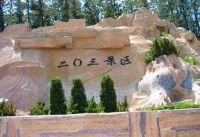
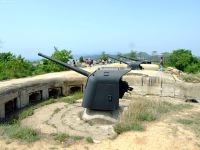 We went to the main battlefield, a hill overlooking the harbor which took 66 days for the Japanese to conquer. The Chinese have kept the battlefield, and the monument the Japanese crafted from bullets (to their arrogance and militarism, says the signs), but have turned the park into a reminder—roughly, don’t forget the past. If one needed another symbol of why China considered the 19th and early 20th centuries a century of shame, or humiliation, it certainly could be here. Russia and Japan fought on Chinese soil while a weak Qing government let it happen.
We went to the main battlefield, a hill overlooking the harbor which took 66 days for the Japanese to conquer. The Chinese have kept the battlefield, and the monument the Japanese crafted from bullets (to their arrogance and militarism, says the signs), but have turned the park into a reminder—roughly, don’t forget the past. If one needed another symbol of why China considered the 19th and early 20th centuries a century of shame, or humiliation, it certainly could be here. Russia and Japan fought on Chinese soil while a weak Qing government let it happen.
Quite a history lesson these past two days!
